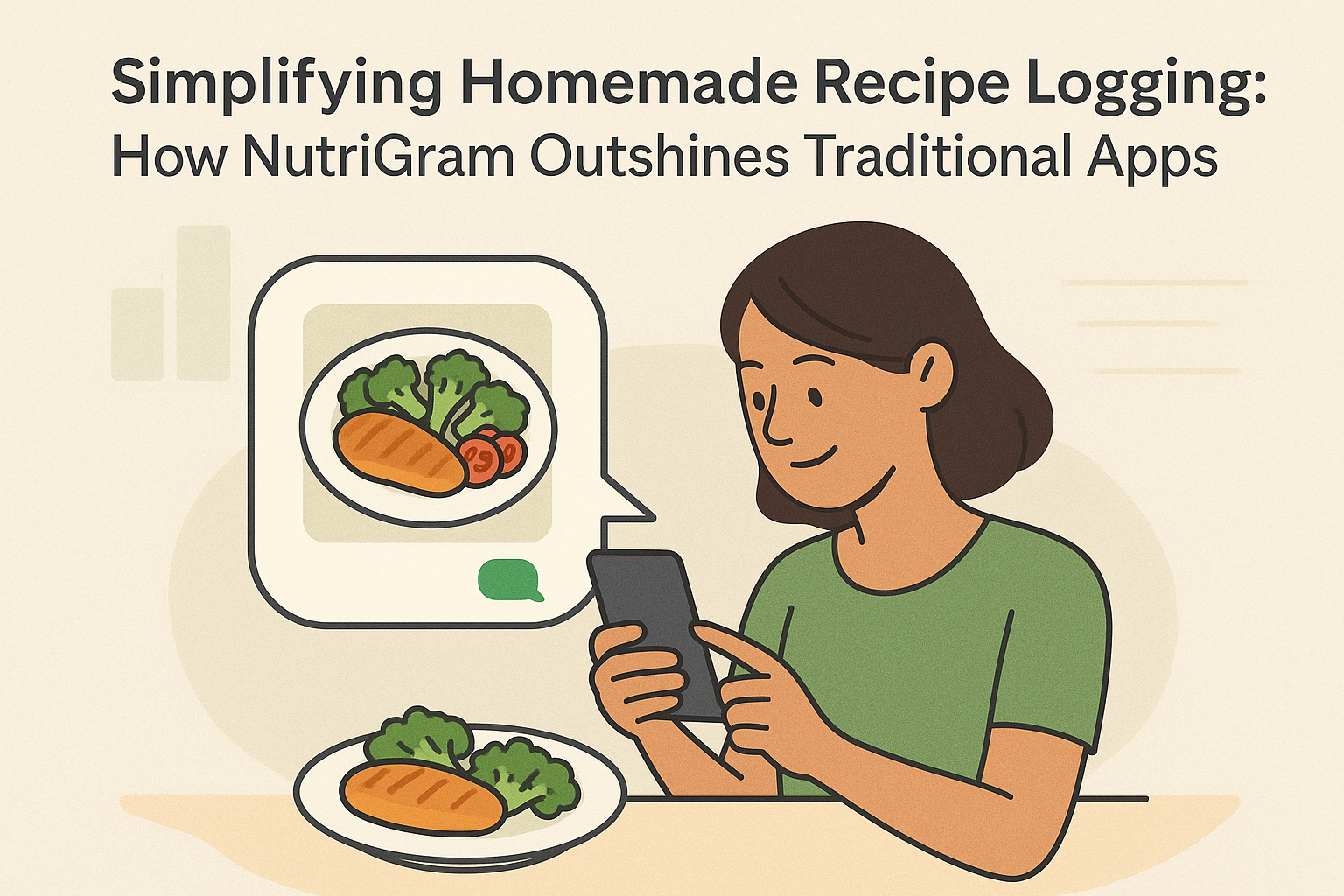
Simplifying Homemade Recipe Logging: How NutriGram Outshines Traditional Apps
Simplifying Homemade Recipe Logging: How NutriGram Outshines Traditional Apps
Logging homemade meals can feel like homework—yet most apps still make you painstakingly enter every ingredient and its quantity by hand. In this article, we’ll explore why that process is a barrier for users and how NutriGram’s photo- and voice-based logging features take the pain out of tracking custom recipes.
The Pain of Manual Recipe Entry
Traditional nutrition apps often force you to input every ingredient and quantity by hand, which can feel like doing homework when you just want to enjoy your homemade meal. (community.fitbit.com) You might find yourself weighing each component, dividing by servings, and painstakingly entering fractions into a form — a process that takes minutes you’d rather spend eating or relaxing. (reddit.com)
Studies show that journalers report homemade meals are hard to track and often abandon logging when recipes aren’t pre-packaged, with complaints like “took too much time” and “hard to track meals without a barcode.” (pmc.ncbi.nlm.nih.gov) The math and manual entry feel so cumbersome that many give up on food journaling altogether. (oneingredientchef.com)
NutriGram’s Photo-Based Logging
Ever wished you could just snap a pic of your dinner and be done? With NutriGram, you can. Simply take a photo of your homemade dish, type a quick caption listing the ingredients, and our AI estimates both the ingredients and their quantities—logging everything automatically.
This approach leverages advanced image recognition and natural language processing to save you time and reduce friction. No more guessing serving sizes or splitting recipes into weird fractions—just caption, submit, and you’re logged.
NutriGram’s Voice-Based Logging
Prefer talking over typing? NutriGram’s voice logging has you covered. Just record a quick audio message describing your recipe—ingredients, quantities, and all—and our system parses the details and logs them for you. No manual typing, no scales needed.
Alternative input methods like audio-based food journals have shown promise for simplifying entry, though past approaches sometimes felt overwhelming or demanded too much structure. (pmc.ncbi.nlm.nih.gov) We designed NutriGram’s voice interface to be conversational and forgiving, so you can speak naturally and still get accurate logging.
Why This Matters
By reducing the manual steps of logging homemade recipes, NutriGram removes key barriers that lead users to abandon food journaling. Simplified input means higher adherence, more accurate data, and better insights into your eating habits.
Research comparing detailed versus simplified logging methods highlights usability challenges with traditional apps—too much detail can backfire. (pmc.ncbi.nlm.nih.gov) NutriGram strikes the balance, offering both simplicity and accuracy without the headache.
Getting Started
- Photo logging: Open the app, snap a picture of your meal, add a caption with ingredients, and tap Submit.
- Voice logging: Hit the microphone icon, describe your recipe, and let NutriGram handle the rest.
With these two super-easy methods, you’ll spend less time logging and more time enjoying your homemade creations. Ready to simplify your food diary? Give NutriGram a try today!